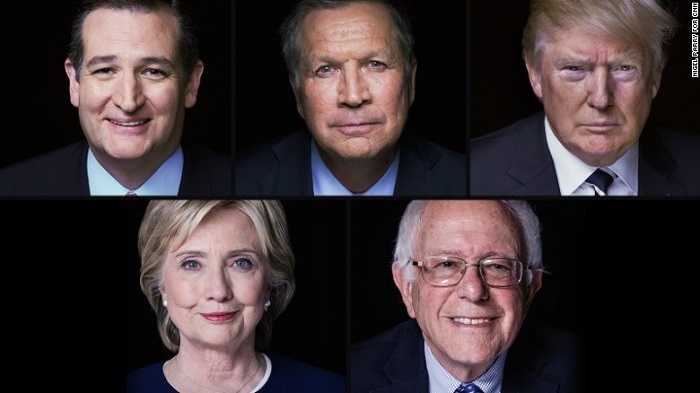"If you dissect anyone`s scripts to get out the vote, it`s clear they are using our stuff," said Todd Rogers, a behavioral scientist and associate professor of public policy at Harvard Kennedy School.
Rogers and several other behavioral scientists pay close attention to what actually motivates people to vote. With only about half the American voting-age population exercising its right to elect candidates, even in presidential elections, candidates who can harness this power can win.
According to a new study in the Proceedings of the National Academy of Sciences, even a few simple, subtle cues work.
`We may call you after the election`
Scientists have noticed a few simple phrases in get-out-the-vote campaigns work best. Voter turnout improves when a campaign reminds a voter they might follow up to make sure they voted.
Rogers and his co-authors found this out by testing a couple of different messages in get-out-the-vote letters sent to more than 770,000 people before the 2010 general election.
Two groups got a letter with several reminders that a voter`s election participation record was accessible, a method that has been demonstrated to increase voter turnouts in earlier experiments. One of these letters went one step further with a message in a highlighted box and a message in the letter body that said "we may call you after the election to ask about your voting experience." Another group of voters got no letter at all.
Voter turnout was higher with the groups that got the letters. The letter that mentioned a possible follow up was more than three times as effective as the typical get-out-the-vote letter, as understood by earlier studies. Even the second letter was more than twice as effective as the typical get-out-the-vote letter.
"This kind of insight can be applied in so many spaces where we want to encourage people to change their behavior or to do something that benefits a group like voting or giving to a charity," Rogers said.
Urging voters to make a plan
Rogers said behavioral science-based communications have worked in earlier primaries.
The script Hillary Clinton`s campaign used to encourage voters to attend the Iowa caucus asked voters details about their caucus site. It offered the voter information about caucus locations and operating hours.
A 2010 study co-authored by Rogers demonstrated that election communications that encouraged a voter to make a plan -- for example, by sharing specifics about where to vote and when polls were open -- more than doubled the impact of a traditional get-out-the-vote message.
Clinton won the Iowa caucus with a razor-thin margin.
Ted Cruz`s campaign used techniques in Iowa that were similar to those tested in a 2008 study.
That study found that mailers listing a voter`s history, as well as their neighbors, increased voting rates. On the front of Cruz`s flier, it said "ELECTION ALERT: VOTER VIOLATION." The other side mentioned that "your individual voting history as well as your neighbors` are public record" and the voter should caucus to "IMPROVE YOUR SCORE" and warned of "lower expected voter turnout," in the area. It also promised a possible follow up.
Paul Pate, Iowa`s secretary of state, called it a "false representation of an official act." Cruz stood by the mailer and said, "I will apologize to no one for using every tool we can to encourage Iowa voters to come out and vote."
Cruz won Iowa by a small percentage.
Following a voter-turnout bible
Donald Green, a political scientist and quantitative methodologist at Columbia University who co-authored that 2008 study, believes that campaigns will take note of this new research.
"Subtle forms of social persuasion basically reminding people in subtle ways that others are doing their civic duty, combined with a discussion of some kind of monitoring or compliance, can be most effective," Green said.
Green`s "Get Out the Vote" book, which features many of these kinds of studies, has become a voter turnout bible for some campaigns.
"One of the most heartening things is to get an email talking about the dog-eared copy some field-work team has been passing around," Green said.
In the past, not all campaigns took this kind of behavioral science as seriously, or they`d describe it as only marginally helpful. Green said he`s heard his science called a "field goal unit," meaning it`s less helpful than a touchdown in the game of election campaigns.
But in a close race, even a small margin of votes can be critical.
"I don`t want to overstate the importance of this kind of work," said Rogers, continuing the football metaphor. "But when it comes to timing and when it comes to getting voters past that final yard, this is where the field team comes in and can make a real difference in a close game."
More about:
















































